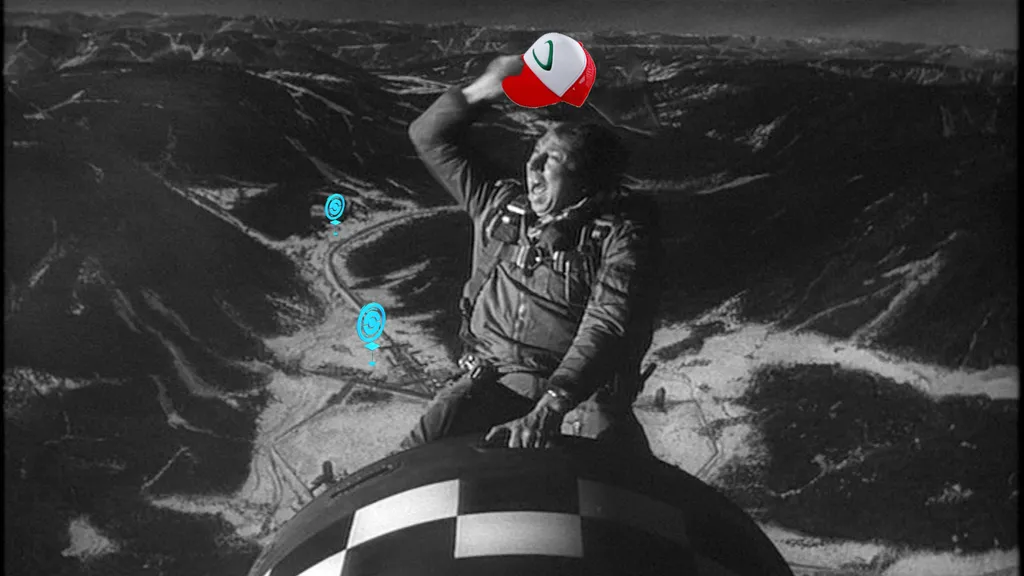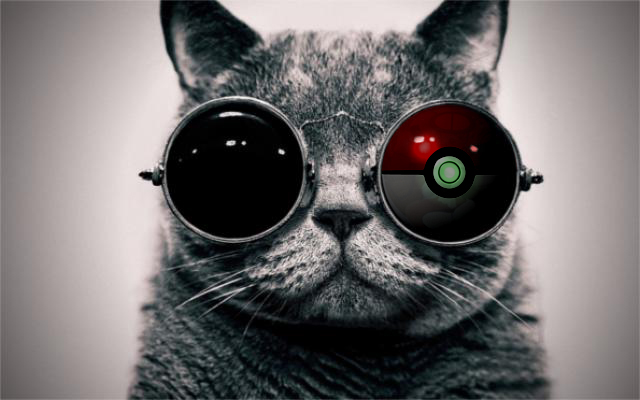Last night a group of ten friends and I wandered around San Francisco catching Pokémon. As we wandered around the city from hot spot to hot spot, the conversation wandered to a question that’s been rolling around my head for the last week – can we consider Pokemon GO as an example of augmented reality?
Whether Pokemon GO is or is not augmented reality has been an interesting topic of debate in the grander tech community this week and there is merit to both sides of the argument. On one hand, many will argue augmented reality in its ‘full form’ includes some form of computer vision to overlay the digital world on your real one. This is the kind of experience you will get with a Microsoft Hololens, a Meta or a Magic Leap – all of which are promising pieces of technology, but are still potentially years away from getting into the hands of consumers.
On the other hand, there are more components to augmenting your reality beyond the display and Pokemon GO has hit those pieces hard. When you go outside to play Pokemon GO, you are creating a whole new experience that only exists when the digital world is blended with the real world. Pokemon GO combines locational data with a digital world in a way that creates a wholly new and meaningful experience that could not have existed otherwise. In those ways, it is augmented reality, the only difference being the way the information is mediated.
It is localized, yes, but it is not wholly contextual – the other side of the argument counters. You are missing the ability for a Pokemon to actually be hiding behind that bush in front of you. That is something that comes with the fully realized form of AR where sensors are able to take that locational data and combine it with visual data to map the digital to the real.
But is AR a purely visual medium? Likely no. There are many ways one can ‘augment’ their world without placing holograms in it. Asking “what will AR be like to the blind?” for example is a way of reframing the idea of what AR is as a whole idea. YES A blind person will never be able to see the holograms in front of them but that doesn’t mean they cannot have their reality augmented by digitalization. In a way, you could argue for them the beeping sound and vibration at a cross walk is an augmentation of their world, but is that augmented reality? If it is, then you have to begin opening up the definition to a point where some would argue it isn’t useful any longer.
So how do you define Pokemon GO? Is it AR or isn’t it? And after thinking about it for a week, there is only one answer that makes sense.
Like Schrodinger’s cat, it both is and isn’t at the same time.
Don’t Forget About Evolution
There’s a simple reason that Pokemon GO doesn’t meet the current expectations of the AR purists, the tech isn’t in consumers’ hands yet. But guess what? It’s coming and Pokemon GO is evolving at the same time.
Earlier this year, Google announced that ‘Project Tango’ was officially ditching the ‘project’ from its name and becoming an official company, and that the first official consumer Tango device – Lenovo’s Phab 2 Pro – will arrive sometime this summer. The Phab 2 Pro, and subsequent Tango-enabled mobile products allow for depth mapping, object recognition, and more – aka pieces missing to the purist AR puzzle.
It’s hard to say how likely it is that Niantic would release a version of Pokemon GO with advanced features, but it would make an awful lot of sense. Even adding some rudimentary features like having Pokemon actually sit on the ground rather than generally floating in space would push the game more into the realm of pure AR.
Augmented reality has clearly been at the forefront of Google’s vision of the future for a while now, starting with Google Glass’ incubation through Google X. But, as we all know now, the tech wasn’t ready yet for the promise that Google wanted to fulfill. That is starting to change.
Tango phones are a step toward that future. At the Phab 2 pro release, Lenovo spoke about the need for these applications to have everyday use cases. That is part of the equation, but you need a bigger reason for people to buy into a phone with more sensors than being able to measure furniture in your home – and a viral hit like Pokemon GO could be that impetus.
Think you are going to sell someone on buying a $499 AR phone or a (potentially) more expensive headset in the future without a compelling reason? Think again. If Pokemon GO continues to evolve and capture the cultural zeitgeist through to the debut of ‘true’ augmented reality then the fans that have stayed loyal will have a compelling reason to finally experience it in a more fully realized form, which is clearly seems to be the end goal for the evolving project.
Is Pokemon GO representative of fully realized potential of AR as a technology? No. But that does not mean it is not augmented reality. A Christmas tree without the star on top is still a Christmas tree, and we don’t need all the pieces in place to declare something augmented reality.
Pokemon GO is the world’s welcoming party for augmented reality. It is the proof of something those who have worked in the industry have known since they began, that AR is going to change the world in a meaningful way – and it already is. How? Allow me to share a brief anecdote from our Pokemon adventure last night:
“Got him!” I exclaimed, pumping my fist as the final shake of the Pokéball added a Ghastly to my Pokédex. I turned to see the rest of the group, alternatively celebrating and moaning as their respective Ghastlys were either caught or frustratingly refused stay in their Pokéballs.
“Did you guys just catch that Ghastly?” A voice calls out from behind us. I turned around to is a smiling group of twenty something’s, all of them with their phones out.
“Yeah!” Most of us replied, with a couple muffled ‘he ran away’s’ for good measure.
“Us too!” They yelled back as we approached each other and kicked up a short conversation about the game before heading off to find more Pokemon. Simple though it was, it was a genuine human moment facilitated by digital creatures overlaid into the world in a meaningful and location based manner – or in shorter terms, facilitated by a reality that was digitally augmented.
So for all those out there who are worried about definitions, I have a message for you – stop worrying and enjoy augmented reality. If a journey of a thousand miles starts with a single step, then Pokemon GO is the first leap.
And honestly:
@heybrucewright@WBMason@UploadVR I can’t wait till these names go away and we just call them computers again.
— Will Smith (@willsmith) July 11, 2016
Think differently? Let us know in the comments!































